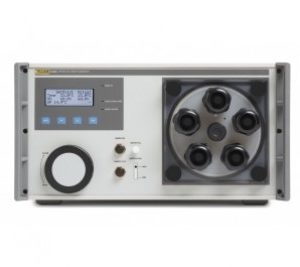Humidity Calibration
Humidity affects many properties of air and the materials that are exposed to it. Monitoring and measuring humidity is important wherever there is a need to prevent condensation, corrosion, mold, warping or spoilage of products. For example, it’s important to measure humidity in industries that manufacture and distribute foods, pharmaceuticals, chemicals, fuels, wood, textiles, and paper. Museums, art galleries, data centers, hospitals, research laboratories, and semiconductor manufacturers are other types of organizations where measuring humidity is vital.
The sensors that measure humidity need to be calibrated regularly to ensure they continue to operate within their specifications. Humidity sensor calibration is typically done using an instrument called a humidity generator.
Most humidity generators are based on one of two designs. A mixed-flow generator controls humidity by using the split-stream method. In this method, dry gas is drawn into the generator and divided into two parts. One part is partially or completely saturated with water vapor; the other part is mixed in until the targeted humidity output is reached. The humidity depends on the wet air’s humidity and the mixing ratio. A high-volume fan in the test chamber keeps the temperature and humidity uniform.
A two-pressure generator has two chambers. The first, called the saturator, contains air saturated with water vapor at a high pressure. The air passes from the saturator to the second chamber, called the test chamber. The test chamber is at a lower pressure. As the air passing into the test chamber reduces in pressure, its relative humidity also drops.
A mixed-flow generator is faster than a typical two-pressure generator, and is also more portable, which makes this type of calibrator a good solution for work in the lab or on-site in the field.
Showing the single result





